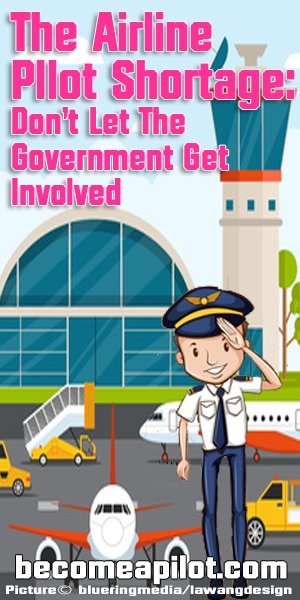 When a humorist is asked about the looming pilot shortage, he proposes booster seats to solve the problem. When the aviation industry is asked about it, it offers a range of well-meaning and often practical solutions. Not wanting to be left out here, I’d like to propose my own solution: Do nothing and let the problem solve itself.
When a humorist is asked about the looming pilot shortage, he proposes booster seats to solve the problem. When the aviation industry is asked about it, it offers a range of well-meaning and often practical solutions. Not wanting to be left out here, I’d like to propose my own solution: Do nothing and let the problem solve itself.
Just to be clear here, we need to do everything we can to increase the general aviation pilot population. That’s a given. What we don’t need to do is to worry about the airlines not having enough pilots. Why? The looming shortage (to the degree that it actually looms) will be one of the best things that’s ever happened to general aviation. If you don’t believe me, just look in your mailbox.
Last week, I received a brochure from TransPac Aviation Academy in Arizona offering a $3,000 sign-up bonus for full-time CFIs. The company offers 80 flight hours a month, a five-day workweek, plus an annual salary and benefits. Get out! How do you explain all those goodies? You can do it in two words: Milton Friedman.
The great economist was a free-market maven who taught that the market’s supply and demand determine the price of goods and services. To date, the active full-time flight instructor population has diminished. As far as we know, CFIs are not being abducted by UFOs and warped off to Romulat for alien probing. They simply left the market because they couldn’t buy food in the market with the money they made. CFIs are now standing in high cotton because there are fewer of them available to work full time.
So what’s going to happen when airlines begin hiring more pilots and those pilots are nowhere to be found, not even on Romulat? If you’re a student of aviation history, you already know the answer, and it bodes well for general aviation.
In the mid-1960s, United Airlines and Pacific Southwest Airlines couldn’t find enough pilots to fly their airplanes. What did they do? They paid people to become commercial pilots. If you had a private pilot certificate, United would interview you, and if they liked you, they’d pay for your commercial and instrument training. Then they’d stick you in a 707 or DC-8, sit you sideways in the cockpit, and give you a gigantic panel of switches (many of which were connected to things). Today, this is very similar to how some European/Asian carriers find and train pilot applicants.
Let’s remember that airlines are in business to make money (at least, they’ve got a lot of my money). To do this, they need people to fly their airplanes. Surely, the CEOs of these companies are aware of this problem and aren’t just sitting around using their thumbs as a defense against alien mischief, right? Here is where Milton Friedman deserves a curtain call.
Think about the FAA’s and Congress’ solution to the Colgan Air crash in 2009. They raised the minimum flight time for Part 121 new hires to 1,500 hours. But the captain of the Colgan airplane had 3,379 hours of total flight time. Based on the FAA’s and Congress’ logic, wouldn’t you think that they would have at least raised the new hire flight time to 3,380 hours?
This is why I’m worried about the government getting involved in solving the pilot shortage problem. If they did, you know this would initially involve offering bids for the development of elevator shoes, stretching machines, and optical devices to make pilots look taller in the terminal. Once they actually understood the problem, who knows what kind of Colgan-type, “boll weevil”–inspired overreaction might be foisted on general aviation and our “now taller” cotton fields. No, thank you.
My proposed solution to the pilot shortage is simple: Sit back and let the market handle the problem. Airlines will find some way to obtain more pilots, such as paying for new hire training, raising pilot pay to entice more to enter the industry, or petitioning the FAA to reduce regulations (i.e., require less total flight time for new hires). In the process, I’m betting that this will help solve GA’s decreasing pilot population, too. If all else fails, we can refurbish a shuttle and order Elon Musk to fire it off to Romulat and haul our abducted CFIs back to earth. I’m sure they would be happy to return home. It’s a thumbs-up for everyone.
An Example of How the Market Is Handling the Problem (June, 2022)
An Update on the Pilots Needed in the Next Few Years (July 2023)
The Latest Update on Pilot Hiring (September, 2023)
Copyright: Rod Machado
Appeared in June issue of AOPA Pilot
